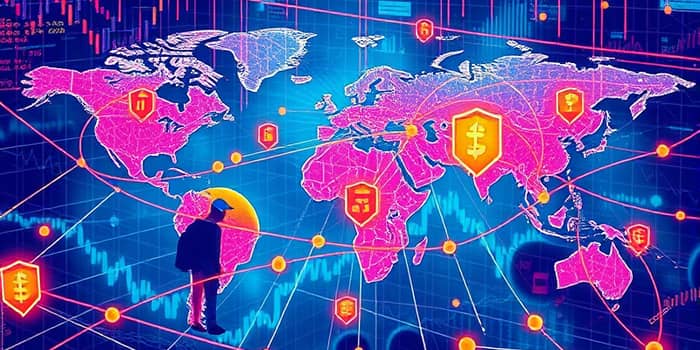
In an era where digital connectivity underpins almost every facet of modern life, the financial repercussions of cybercrime have never been more alarming. Organizations, from multinational corporations to small local businesses, grapple with the fallout of data breaches, ransomware attacks, and intellectual property theft. As threats intensify, understanding the full magnitude of these losses is crucial for policymakers, executives, and security professionals alike.
Cybercrime is no longer a purely technical issue; it represents a profound economic challenge with far-reaching consequences. In the following analysis, we explore global projections, sectoral vulnerabilities, cost components, defensive expenditures, regulatory pressures, and emerging trends. Our goal is to arm readers with the insights necessary to craft effective strategies against this rapidly evolving menace.
Recent forecasts paint a stark picture: global cybercrime costs will reach $10.5 trillion annually by 2025, up from $3 trillion in 2015. Other estimates project losses as high as $23 trillion by 2027 and $15.63 trillion by 2029, reflecting divergent methodologies but unanimous consensus on exponential growth.
This surge represents the greatest transfer of wealth in history, eclipsing annual losses from natural disasters and surpassing profits from all major illegal drug trades combined. Firms that fall victim to breaches often endure stock price declines and reputational harm, eroding shareholder value and investor confidence.
No industry is immune, but certain sectors shoulder disproportionate burdens. In the UK alone, cyber attacks cost £14.7 billion annually (0.5% of GDP), with intellectual property theft accounting for up to £8.5 billion of that sum. Retailers report widespread disruptions: 68% suffer operational downtime, 45% face supply chain delays, and 23% see stock prices dip post-incident.
Healthcare lags in defense spending despite the critical nature of its services; cumulative sectoral investment is expected to reach $125 billion between 2020 and 2025. In finance, manufacturing, information, and entertainment, per-incident costs average £330,000–£337,000 in the UK, reflecting the high stakes of stolen data and disrupted operations.
Small and medium businesses (SMBs) are particularly vulnerable. Over half of all cyberattacks target SMBs, and 60% of those hit go out of business within six months. Without resources or expertise, many face existential risk to small businesses and struggle to recover from even a single breach.
Cybercrime losses encompass both direct and indirect expenses. Direct costs include data destruction, stolen funds, ransom payments, and immediate productivity losses. Organizations recovering from ransomware often incur average restoration costs of $1.5 million, while payouts can exceed $1 million per incident.
Indirect costs are equally pernicious: forensic investigations, legal fees, regulatory fines, reputational harm, and long-term erosion of market trust. The average cost of a data breach globally was $4.44 million in 2025, rising to $10.22 million for U.S. firms. At roughly $160 per compromised record, even smaller breaches can inflict lasting damage.
Over time, these factors contribute to diminished innovation incentives, as businesses fear intellectual property theft. Market consolidation may favor larger actors with robust defenses, further marginalizing smaller competitors and reducing economic diversity.
In response to mounting threats, global cybersecurity spending is forecast to reach $1.75 trillion between 2021 and 2025. Yet budgets are growing linearly while threats expand exponentially, a classic case of persistent underinvestment in cybersecurity budgets. This imbalance jeopardizes the effectiveness of defensive measures.
Technological advancements offer hope: AI and automation are being harnessed to detect anomalies at machine speed, improving incident response times and threat hunting capabilities. However, attackers are also innovating, deploying AI-powered malware and automated bots to probe networks with unprecedented persistence.
Governments worldwide are tightening data protection standards, imposing steep fines for non-compliance. In retail, 33% of firms have faced regulatory penalties following breaches. The evolving compliance landscape demands constant vigilance and investment in governance, risk, and compliance frameworks.
Society at large suffers when critical infrastructure is compromised. Attacks on utilities, healthcare systems, and emergency services can disrupt daily life and threaten public safety. As digital and physical realms intertwine, the stakes extend far beyond balance sheets.
The threat horizon continues to shift. Ransomware-as-a-service platforms lower the bar for would-be criminals, while supply chain attacks exploit third-party vulnerabilities. The proliferation of IoT devices and hybrid work models further magnifies exposure, creating an ever-expanding attack surface.
To mitigate these risks, organizations should prioritize strategic, layered defenses and foster a culture of cybersecurity awareness. Consider the following actions:
By embracing strategic investment in cyber resilience and acknowledging the full spectrum of direct and indirect impacts, businesses can transform cybersecurity from a cost center into a competitive advantage. As the digital frontier evolves, proactive measures will distinguish leaders from laggards.
Ultimately, safeguarding assets and data is not merely a technical imperative but an economic one. Organizations that rise to this challenge will protect their bottom lines, preserve stakeholder trust, and contribute to a more secure global digital ecosystem.
References





